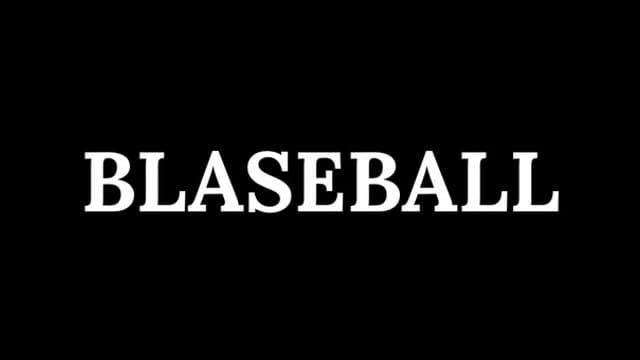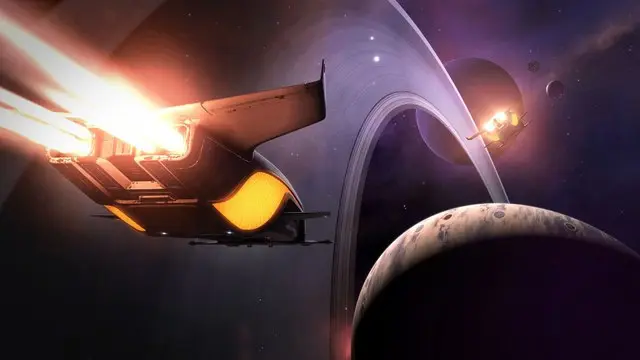This weekend sees the long-awaited US wide theatrical release of Belle, the latest animated feature from writer-director Mamoru Hosada, five-time winner of the Japan Academy Film Prize for Animation of the Year. The film was a tremendous hit at the Japanese box office last year, following a 14-minute standing ovation at its Cannes premiere. When I first saw Belle at the New York Film Festival last October, I felt as if I’d just seen a new classic, and upon revisiting it ahead of this review, that feeling has only grown stronger. Belle is a visually stunning masterpiece, one of the most beautiful and fascinating depictions of a life lived online that I’ve ever seen on film.
What if Hannah Montana Could Make You Bawl Your Eyes Out
When Suzu Naito (voice of singer-songwriter Kaho Nakamura/Kylie McNeill in the English dub) was just a little girl, her mother bravely swam across a raging river to rescue a child from drowning. The child made it back; Suzu’s mother did not. Suzu carries this trauma into her adolescence, setting aside her love of music and becoming physically ill when she attempts to sing. But when Suzu logs into U, a virtual reality social media space, she is able to find her voice again through her anonymous computer-generated avatar, Bell. Thanks in part to her close friend/producer/manager Hiro (Lilas Ikuta/Jessica DiCicco), Bell becomes a massive viral success, renamed “Belle” by public consensus. Belle’s fame is rivaled only by the infamy of U’s most controversial figure, the competitive fighter known as the Dragon (Takero Satoh/Paul Castro, Jr.). Suzu becomes fixated on discovering the source of the Dragon’s angst. Meanwhile, in the real world, she continues to struggle with her grief and the daily melodrama of teenage life.
Each of Belle’s two worlds is depicted in a completely different style of art and animation. The digital realm of U is a computer-modeled, cel-shaded neon wonderland with an infinite depth of field. Hundreds, maybe thousands of imaginative user avatars fly back and forth through the massive open cyberspace. Belle’s opening musical number introduces the titular character riding on the back of a flying humpback whale outfitted with massive speakers through an impossible city of stalactite skyscrapers to a crowd of thousands of awestruck cartoon humanoids. But when the song is over, we meet Suzu, a hand-drawn character in a traditional 2D animated world. Suzu’s real life is much slower, quieter, and less crowded, but no less beautiful. Her daily commute to school through her pastoral town in Kōchi Prefecture is lush with the greens and blues of nature. Two hours spent in either environment would be a treat, but their juxtaposition highlights the value of both.
Belle’s original score blends a variety of styles, supplied by the team of avant-garde contemporary composer Yuta Bandoh, electronic orchestrator Ludvig Forssell, and jazzy animé maestro Taisei Iwasaki. In the real world, the soundtrack is gentle and thoughtful, but inside U, the drama of the music is amplified, creating a lush and dramatic backing track for Belle’s ballads and bangers. Belle’s voice, Kaho Nakamura, also co-writes her songbook with Forssell, Iwasaki, and writer-director Mamoru Hosoda. A film about a massively popular musician can fall apart if the star’s music is anything less than fantastic, but Belle’s four originals are all showstoppers. While not a musical in the strictest sense since the songs are all diegetic, they each serve an important purpose in Suzu’s emotional journey. If the eleven o’clock number, “A Million Miles Away,” doesn’t bring a tear to your eye, I don’t know what to tell you. (This assessment is based upon the English-subtitled Japanese version, I cannot speak to how well the songs hold up in the English dub.)

Online is Amazing/Online is Childish
Belle’s U is a fantasy version of the so-called metaverse, in which users are completely immersed in a virtual social media platform. The rules of U are plainly spelled out, but like most fictional portrayals of virtual reality, it’s best not to think too hard about how it works. Each user’s avatar is called an AS, and is basically a more imaginative version of Residual Self Image from The Matrix. Each user can only have one AS, which is tied to their body’s biometrics and generated to outwardly represent their inner self. Some peoples’ AS resemble their real forms while others are more abstract and unreal. (There are a lot of furries.) In Suzu’s case, her AS Belle looks like her classmate Ruka (Tina Tamashiro/Hunter Schafer), whom she idolizes. Many users treasure their anonymity, which is why Unveiling — which strips away a user’s AS and forces them to appear as their physical selves — is considered the ultimate punishment on U. For Suzu, the ability to disassociate from herself as Belle doesn’t free her from her pain or sadness, but it does give her license to express it. In this way, Hosoda champions the Internet as a tool of self-actualization.
But Belle also highlights how heartless the Internet can be, admitting that each of social media’s benefits comes with an equally cruel side effect. Notoriety on U (as with the real Internet) comes not from universal acclaim but from polarization, from both fans and haters sharing something incessantly until it becomes ubiquitous. Without a strong support system in the real world, one can easily become overwhelmed by the negativity of online attention. One of our first glimpses of social media in the film comes during a fragmented flashback to the death of Suzu’s mother and its immediate aftermath. When Suzu remembers her mother’s sacrifice, her very next memory is reading the social media backlash, dozens of critical voices asking “How could she leave her own child behind to save a stranger?” This becomes all Suzu can think about, not just in the moment, but for years to come. There were certainly as many (if not more) conversations praising her for risking her life to save a child in need, but that’s not what Suzu remembers. When Belle is climbing the charts, Suzu’s first instinct is to obsess over criticism, much of which is made in bad faith. Even during a concert in which Belle sings her heart out to overwhelming acclaim, there are still a few audience members snickering at her sincerity. Luckily, Suzu has her driven, pragmatic partner Hiro to keep her from falling down this particular rabbit hole.
U also personifies online self-righteousness through the Justices, a group of users who take on superhero personas and prop themselves up as the platform’s moderators. Their leader, Justin (Toshiyuki Morikawa/Chase Crawford), carries a weapon with the power to Unveil any user, and threatens to dox anyone who they perceive as disrupting the community. As the platform’s creators, the 5 Voices, are apparently absent, the Justices operate with impunity, gaining the support of many users and corporate sponsors. Writer-director Mamoru Hosoda emphatically renounces the idea that the Internet needs cops, and condemns those who try to enforce their own standards for online behavior as bullies seeking glory and attention. The position that social media should be totally unmoderated is a bit naive, as anyone who’s ever been the victim of online harassment or hate speech will tell you, but the target of Hosoda’s criticism appears to be closer to those users on our real internet bent on installing an order in a beautifully anarchic, leaderless space. The question will always be, as in the real world, “Whose order?”

Tale as Old as Vine
Belle is inspired in part by the well-worn fairy tale of The Beauty and the Beast, even including a few direct visual quotes from the beloved 1991 Disney adaptation. Suzu, as Belle, becomes fixated on the Dragon, sometimes called the Beast, after one of his brawls collides with one of her concerts. Unlike in traditional tellings of the fable, Belle seeks out the Beast, sensing that she may be able to understand his pain. As Belle, Suzu creates a stunningly beautiful guise through which to express her melancholy, but the Dragon personifies completely unpolished, unrestrained sorrow and rage, the source of which he refuses to talk about. His AS displays colorful bruises, digital representations of either physical or psychic trauma. Suzu is fascinated to learn more about this brooding soul in her midst, not only because that is an extremely teenage instinct, but because she’s wounded, too, and doesn’t want to see someone else suffer alone.
Beauty and the Beast isn’t so much the basis for Belle’s story so much as a costume that it wears for a portion of the film. Some plot beats are repeated and some characters have direct analogs, but this is mostly concentrated in the movie’s second act, when Belle goes wandering through the Dragon’s secret castle and encounters his small group of simping AI servants. Belle isn’t about looking past someone’s appearance to find and love their inner beauty — an impossible parallel in a world where people are essentially presented inside-out — but about interrogating the ways individuals see themselves. In the real world, Suzu is quiet and fragile, while Belle projects power and confidence. So, is Suzu actually fragile, or has she just been conditioned to think of herself that way by the pitying eyes of her peers? Belle is proof that Suzu is strong; Suzu just has to find a way to embody that strength in the real world.
While the parts of Belle that take place within U are the most ripe for high-minded conversation, the portions set in the less glamorous physical world are just as key to the film’s beauty and resonance. Belle’s themes and messages center around not just self-acceptance, but also self-sacrifice, the kind that requires that people demonstrate the same courage they have in an anonymous online space in the physical world. Talk is cheap and Twitter is free. It costs nothing to lend a kind word, but that’s not always enough. Connecting with people online is a wonderful thing, but sometimes being there for someone means being there, showing them that they’re worth supporting in a way that requires some effort and inconvenience. How far would you go to help someone you’ve never met? Belle invites you to look within for your best self and to bring it out where it can do the most good.


